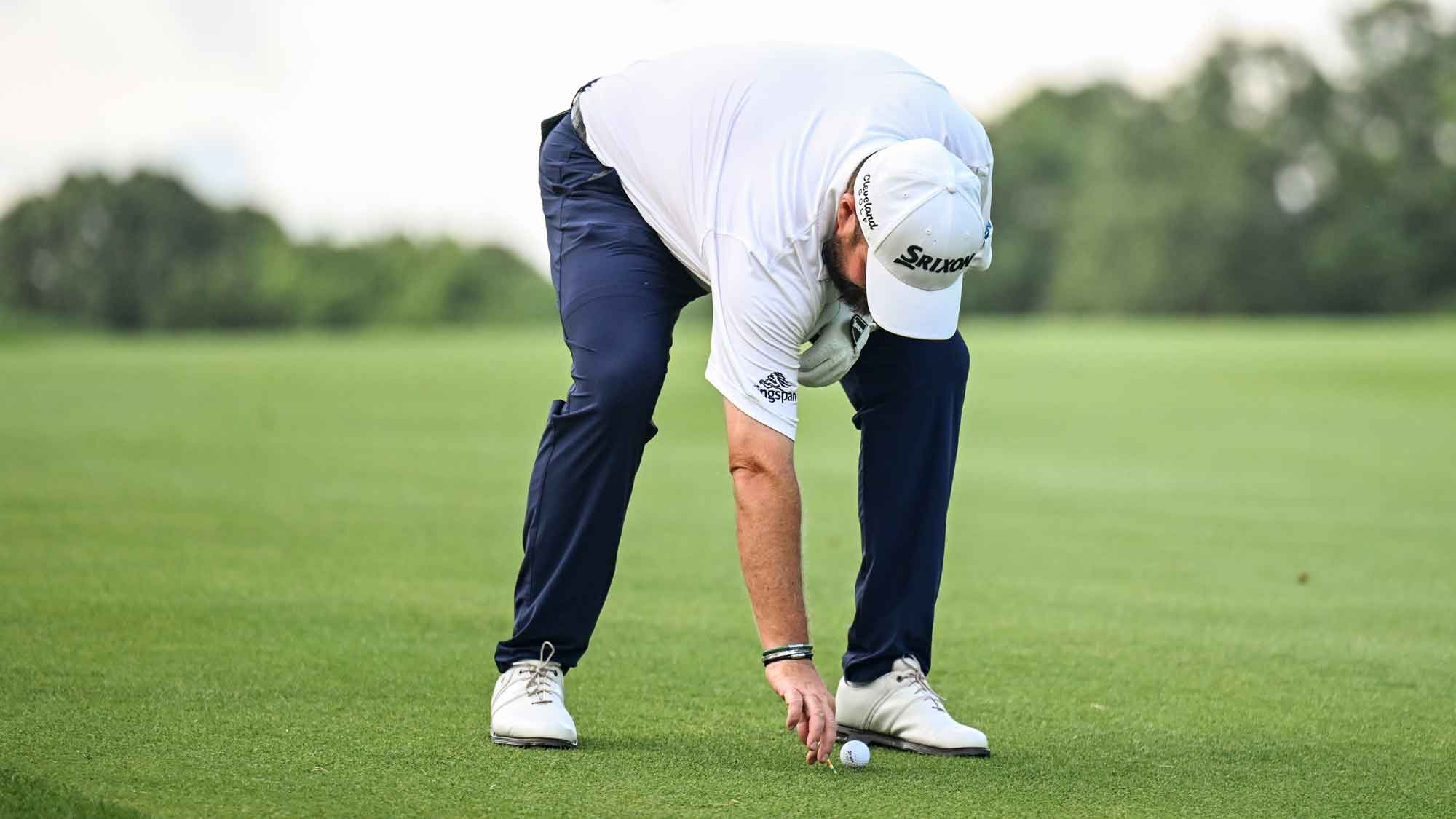Like Adam Scott’s, your fixed-point stroke is now illegal, thanks to the anchor-putting ban put into place by the USGA on Jan. 1. Fair or foul, the rule’s here to stay, but that doesn’t mean you can’t bend it a little. By incorporating some old anchoring tactics with new-age strategies, you can continue to putt at a high level in 2016 and beyond.
1. Drop the Anchor
This will feel most natural—and eliminate the need to waste bucks on a new putter. Simply take your normal anchored setup then pull your left hand away form your chest. As you can see in the photo below, your posture and setup remain unchanged. (Notice the left hand moves from slightly off-line with the shirt logo to directly under it.) Focus on locking your elbows in their bent position. Maintaining that firm, athletic position is key for keeping putts on line and dropping a few from distance.

2. Make Your Forearm Your Friend
With the grip of your belly putter in tight against the inside of your left forearm, wrap your right hand around the handle and your forearm, creating a tight bond. Like anchoring the butt of the club against your chest, this specialty hold creates a fixed point for your stroke, eliminating many of the errors that lead to yipping. Make sure the top of the grip is below your left elbow. If it sits above the crease, you’re using an illegal hold.

3. Claw Out a Smooth Stroke
When nerves strike, the sensors in your body, especially those in your fingers, go wild with excitement. That’s why many anchor putters go with a claw grip (photo, below). With your right-hand fingers off the handle, the trembling action in your hand has less of an effect on your stroke. Stead the club with your left hand and simply pull back and push the putter with your right. This rocking motion is at the heart of a solid anchor stroke. But this time, it’s perfectly legal.

POLL
We asked the top 100 teachers which move they would prefer to teach.
Method 1: 23 percent
Method 2: 63 percent
Method 3: 14 percent






